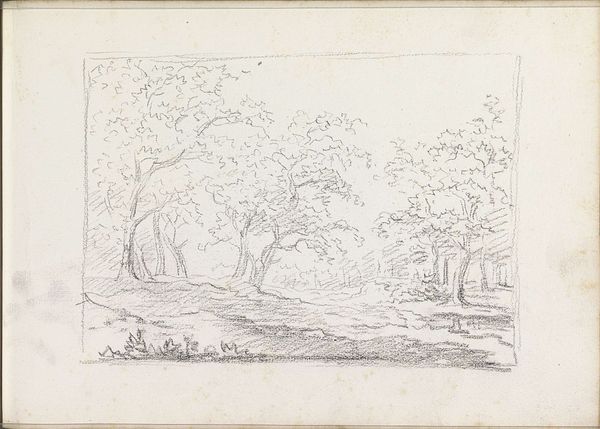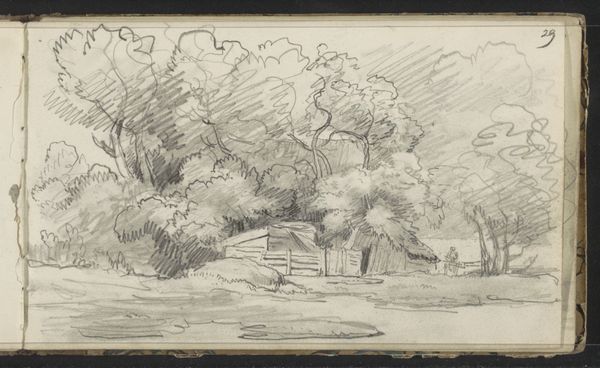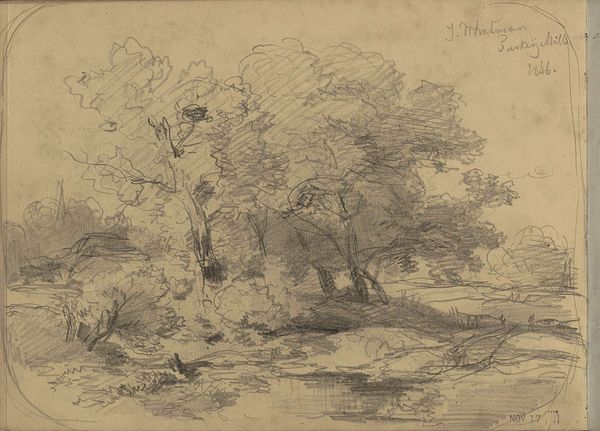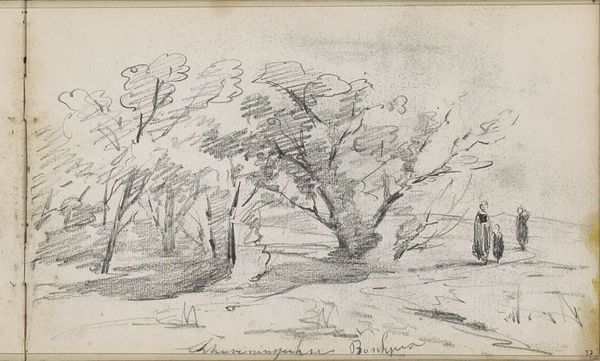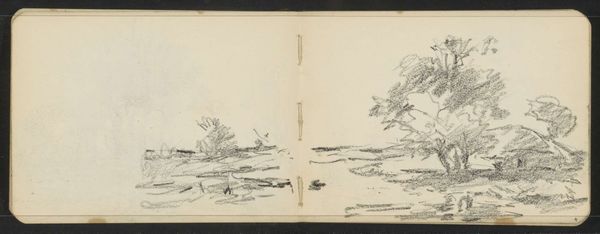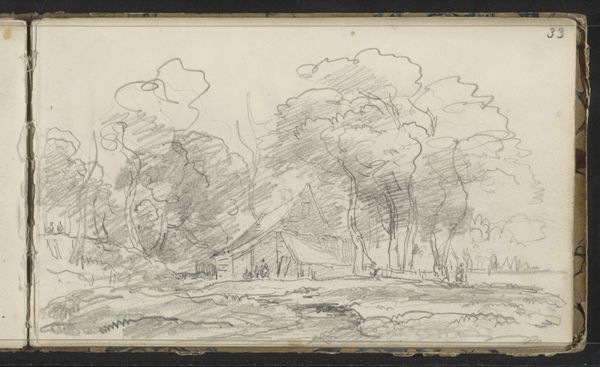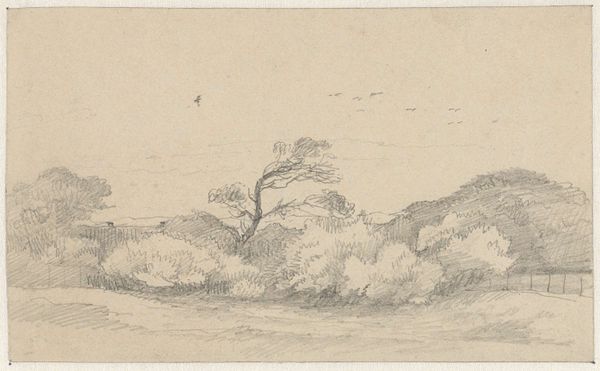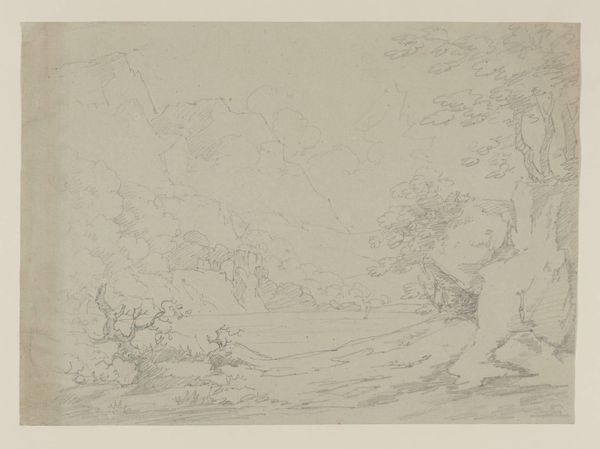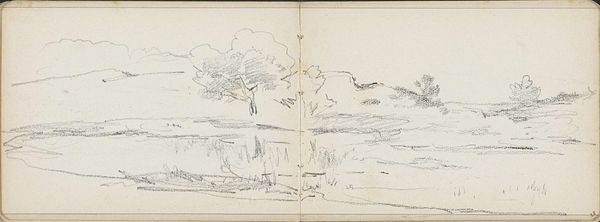
drawing, paper, pencil, graphite
#
drawing
#
landscape
#
paper
#
romanticism
#
pencil
#
graphite
Copyright: Rijks Museum: Open Domain
Editor: So, here we have "Bomen aan een waterkant", or "Trees by the Waterside," by Arnoldus Johannes Eymer, likely created between 1803 and 1818, using graphite and pencil on paper. It's interesting how sketchy and unfinished it feels; you can almost feel the artist capturing a fleeting moment. What stands out to you in this piece? Curator: What strikes me is how this seemingly simple sketch embodies the rising Romantic sensibilities of its time. Consider the period – the late 18th and early 19th centuries – Europe was experiencing dramatic social and political upheaval, leading to a profound interest in nature as a source of solace and spiritual connection. Do you see how Eymer focuses on the wildness, almost a sublime indifference, of nature rather than an idealized pastoral scene? Editor: Yes, the sketchiness does add to that wild, untouched feel. Curator: Precisely. And this depiction also highlights a shift in art's patronage and function. While previous eras often saw art primarily commissioned by the church or aristocracy, Romanticism aligned with the rise of a new, bourgeois public. Art became a tool for personal and emotional expression. Think of this work not just as a drawing of trees, but an emotional statement made by and intended for the consumption of free people in society. Editor: That makes sense. The directness of the medium, pencil on paper, feels almost democratic compared to oil paintings commissioned by wealthy patrons. Curator: Exactly. The choice of such immediate and portable materials allowed artists like Eymer to engage with nature directly and quickly. This approachability extended to the audience too, fostering a connection with nature and art accessible to a wider public. In what ways could museums like ours either help or hurt this effort? Editor: I see your point. By showcasing works like this, we amplify the artist's voice and reach, giving him an audience to contemplate nature; it can be very inspirational for emerging artists like myself, yet on the other hand, taking a raw work out of context also creates some distance, in the sense of not being able to experience the real-world setting for myself. Curator: A valid point! I believe analyzing its socio-historical context makes us re-evaluate its purpose today.
Comments
No comments
Be the first to comment and join the conversation on the ultimate creative platform.
